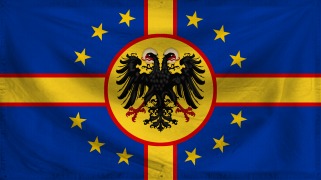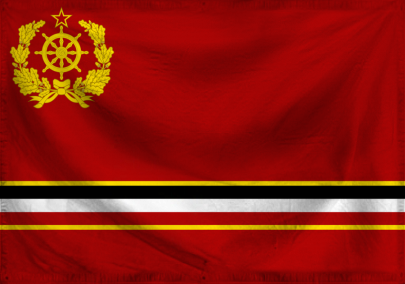Below you can find an abbreviated timeline of significant events, intended to provide you with a general idea of what the world looks like and what can be expected going forward.
24 February 2022 to 1 November 2024: Russo-Ukrainian War. The conflict sees both economies brought to ruin and heavily reliant on foreign support to rebuild. 503,000 Ukrainians and 512,000 Russians were killed or wounded during the war, however the war ended in a negotiated settlement after Ukrainian counter offensives in 2024 pushed the Russians back into Crimea.
2023: The UNSC expands for the first time, adding India to the list of permanent members. SpaceX flies the first private passengers around the Moon.
2024: The Treaty of Ankara is signed between Ukraine and Russia November 1st, officially ending the conflict. Russia cedes all claims to Eastern Ukraine while Ukraine cedes all claims to Crimea. In the wake of the war, while Europe and the West help to rebuild Ukraine, Russia is forced to turn instead to China and India. The economic scars of the war remain to the present day in both nations.
NASA and the ESA collaborate in the launch of Artemis II, the first crewed mission of the Artemis rockets. The Lunar Gateway Station was launched in November, planned to be operational in time for Artemis IV in 2027.
Russia completes its withdrawal from the International Space Station. However, due to economic troubles, its own space station is delayed. Russian Cosmonauts instead conduct missions alongside Chinese taikonauts on the Tiangong station.
Axiom Station became the first privately owned and operated space station in Earth orbit.
Protests in Iran grow beyond the ability for the Tehran regime to control. Starting after the murder of a group of schoolgirl protesters, massive protests start across the nation and include important industries like the oil and even parts of the standing armed forces.
2025: After nearly three years of negotiation, the Constitution of the United States of Europe is signed in Brussels on May 9th. A modification and consolidation of previous EU treaties such as the Treaty of Lisbon, the new Constitution is ratified by the national assemblies of Europe by the end of August.
In Africa, the East African Community ratified their new Constitution on July 7th, forming the East African Federation.
Artemis III is launched, resulting in a return of humans to the Moon for the first time since the 1970s. American Astronaut Angela Hayes becomes the first woman and first person of color to set foot on the moon.
The ISRO, India’s Space Agency, launches and concludes its first manned spaceflight, with Aditya Pillay and Mahendra Rhagavan to become the first Indians in space launched by their home nation.
The November Revolution in Russia begins, seeking to oust Putin.
2026: The UNSC is expanded again, this time adding Brazil to the list of permanent members.
2027: Artemis IV launches, delivering a habitation module to the Gateway Station and completing a Lunar Orbit.
Starlab becomes the second private space station after Axiom. While Axiom is primarily serving tourism and other commercial interests, Starlab is focused towards serving research interests.
The June Revolution in Russia begins, seeking to oust Vdovychenko, Putin’s replacement. The June Revolution concludes by November with the rise of the Free Russia Party to power.
2028: Artemis V delivers ESPRIT refueling module to Gateway before landing on the Moon to deploy the Lunar Terrain Vehicle.
Blue Origin and Sierra Space launch the Orbital Reef Space Station, the third commercial space station. The station serves as a mixed use business park, serving various clients.
The PRC lands its first mission on the Moon.
2029: SpaceX, an American private space company, lands the first manned Starship on Mars.
Artemis VI delivers the Gateway Airlock Module before landing.
The USE begins work on its own space station, intended for astronomical research.
Russia adopts a new constitution.
2030: Artemis VII lands with the Habitable Mobility Platform, enabling longer stays on the Moon.
The Mosul Dam in Iraq collapses. Mosul is almost entirely destroyed while the cities of Tikrit, Samara, and Baghdad are heavily inundated with water. 1.5 million people are killed in the flash flooding and millions more are displaced. The massive economic disruption ripples throughout the Middle East and the world as oil prices soar.
2031: Artemis VIII lands.
In the end of an era, the International Space Station begins its retirement as sections are deorbited to burn up in the atmosphere.
As oil prices continue to rise after the Mosul Dam disaster, the USE and other states accelerate efforts to transition away from oil.
2032: Artemis IX lands with the Foundational Surface Habitat.
India launches their own space station, capable of housing three people for 15 days.
2033: Artemis X lands.
Tiangong III is extended for five years as China prepares a new station.
2034: Artemis XI lands.
2035: SpaceX and other private space companies establish permanent private settlements on the Moon, largely as a waypoint ahead of trips to Mars.
China, the USA, and the USE establish permanent Lunar bases, though only the American and European bases are manned.
2036: China announces Tiangong IV will launch on schedule in 2038.
2037: Lunar mining efforts begin, spearheaded largely by US companies.
2038: China launches Tiangong IV.
2039: India and China stake mining and territorial claims to Lunar soil.
2040: The USA and USE stake their own mining and territorial claims.
2041: Tensions rise between Taiwan and China as the Taiwanese polls indicate 60% support for independence. A skirmish occurs between Chinese and Taiwanese police in the waters off Kinmen. No one is injured but tensions flare with the Chinese deploying a carrier group. The US deploys their own, leading to a tense stand-off that lasts most of the year.
2042: China expands its provocations against Taiwan. Another shooting incident occurs between Taiwan and China, this time in the South China Sea between two vessels belonging to their respective Coast Guards. No damage or injuries are reported. However, two weeks later a Chinese J-10 collides with a Taiwanese F-CK-2 fighter, killing both pilots. China blamed Taiwan for the incident while Taiwan blamed China.
2043: The United States proposes the creation of a Pacific version of NATO. Japan, Australia, New Zealand, Taiwan, and the UKexpress interest. China condemns the proposal as inflammatory.
2044: Border skirmishes between India and Pakistan flare up again. A large-scale Indian Army offensive in Kashmir directed against Islamist militants comes into conflict with Pakistani force. Shots are exchanged, leaving seven soldiers and thirty civilians dead. Skirmishes continue for nearly a year.
2045: Indo-Pakistani skirmishes come to an end, leaving over two dozen Indian soldiers and a roughly equal number of Pakistani soldiers dead and dozens more wounded.
USA announces new military space station, to be named Freedom. The space station is claimed to be intended to facilitate US Space Force efforts to maintain America’s constellation of satellites without relying entirely on launch windows and weather patterns to cooperate. China and Russia condemn the announcement, decrying the ‘Militarization of Space’. India chastises the United States for ‘Further destabilizing the final frontier’. North and South Korea start initial talks on a framework for reunification, backed by both China and the U.S. with further talks on more concrete actions set for 2050.
2046: USA and USE land on Mars in a joint mission, establishing a permanent research outpost. China and India follow by the end of the year.
Tensions flare again between China and Taiwan as a shootout between Chinese and Taiwanese police near Kinmen leaves two officers dead and three more injured.
In light of rising tensions, Japan, the United States, Australia, Canada, New Zealand,and the UK form the Pacific Treaty Organization. China and Russia immediately condemn the organization, with China going so far as to declare it a ‘threat to World Peace.’
2047: After years of debates, the CSTO and SCO are formally merged. India withdraws, however, due to the favoritism of China and Russia towards Pakistan.
2048: Richard Lowe, Senator from Florida, is elected President alongside longtime Ohio Senator Jorge Gomez. The pair vow a return to strengthening the military and shoring up alliances in both the Pacific and Europe.
2049:
2050: RP Starts.
With the context out of the way, below can be found the application and lists of reserved and accepted nations. When it comes to creating a nation, a wide degree of latitude can be accepted, provided that you are able to provide an interesting and engaging reason for why things work out the way they do and that it does not contradict events of other applications in your region or the overall history.
I will also lay out the rules of this RP here, to ensure that they are noticed.
1. DO NOT GODMOD! No, but seriously, don’t Godmod, it makes the RP terrible.
2. The word of the OP and Co-OP is final.
3. Keep everything PG-13, please.
4. Do not mix IC and OOC problems, and please keep it courteous in the OOC and IC.
5. If you have an issue with another player, please ask the OP or Co-OP to moderate it.
6. Please coordinate with other players if you want to jointly write a post/negotiate deals.
7. Posts must be at least two paragraphs long and of good quality.
8. Be respectful.
9. The point of divergence is 1 November 2022, unless otherwise stated in the main history timeline.
10. Posts can cover a span of up to three months. Each three-month period starts following an IEC post except for the first period. The start date is January 1st 2050.
11. Players must make at least one post a week, meaning at least every seven days from each post. Extensions may be granted by the OP and Co-OPs on a case by case basis.
12. Any changes to the irl military must be laid out in the military information section, otherwise the numbers etc will be assumed to be the same as irl.
13. Not a rule, but do try to have fun.
Application:
- Code: Select all
Nationstates Name:
Nation Name:
Capital:
Territory:
Population:
Official Language:
Recognized Languages:
Flag:
National Anthem (optional):
Head of State:
HoS Picture:
Head of Government:
HoG Picture (If different from HoS):
Legislature Name:
Party in Power (If bicameral note who controls each):
GDP (PPP):
GDP (Nominal):
Currency:
Space Capabilities/Information (Must be approved by OP and Co-OPs)
Military Information (Will likely vary from IRL):
Alliances (Will likely vary from IRL):
History Changes (Subject to review and approval by OP and Co-OPs):
Do not remove - Alpha777
Reserved:
The People’s Republic of China
The Republic of Zambia
The Kingdom of Thailand
Libya
Accepted:
The Russian Federation
The United Kingdom
The United States of America
The United States of Europe
The Ukraine
The Union of Maan Country
The State of Greece
The Republic of Korea
The Republic of Cuba
Discord is required, 90% of discussion will occur there.
IC Thread is Live


























